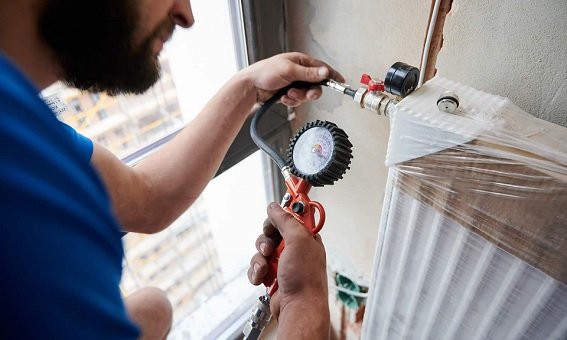Water leaks, whether in residential, commercial, or industrial settings, pose a significant challenge to property owners and maintenance teams. Left undetected, leaks can escalate into costly repairs, water wastage, and structural damage, creating financial and environmental burdens. Ceiling leak repair is especially critical in preventing further damage to interiors and ensuring structural integrity. Traditional detection methods, while useful in their time, often fall short in identifying hidden leaks buried within walls, underground pipes, or expansive infrastructure.
This is where high-tech tools have stepped in, revolutionizing the way leaks are identified and managed. By combining cutting-edge technology with precision, these tools have transformed leak detection into a proactive and efficient process, offering unparalleled benefits for both small-scale projects and large-scale operations. In this article, we delve into the role of these advanced tools and their impact on modern leak detection practices.
How High-Tech Tools Have Revolutionized Leak Detection
The field of leak detection has undergone a remarkable transformation with the integration of high-tech tools. Traditional methods often relied on guesswork, manual inspections, or visible signs of water damage, which could delay detection and lead to extensive property damage. In contrast, today’s advanced technology allows leaks to be pinpointed with speed and precision, even in the most inaccessible areas.
High-tech tools, such as thermal imaging cameras and acoustic sensors, have made it possible to detect subtle changes in temperature or sound that indicate a leak. These tools work seamlessly in real-time, identifying issues that might otherwise go unnoticed for months. Additionally, the use of tracer gases and advanced digital monitoring systems has enabled technicians to locate leaks in underground or concealed pipework with minimal disruption to the surrounding area.
By eliminating the trial-and-error approach, these modern technologies not only save time but also significantly reduce the cost and inconvenience associated with traditional leak detection methods. They allow for non-invasive inspections, preserving the integrity of structures and reducing unnecessary damage. This technological leap has not only improved efficiency but has also set a new standard for accuracy and reliability in the industry, making it an essential component of leak detection today.
Key High-Tech Tools Used in Leak Detection
High-tech tools have become indispensable in the field of leak detection, offering innovative solutions for identifying leaks that are otherwise difficult to detect. These tools leverage advanced technology to enhance accuracy, minimize disruption, and expedite the detection process. Below are some of the most widely used high-tech tools in modern leak detection:
- Thermal Imaging Cameras
Thermal imaging cameras are highly effective for identifying leaks by detecting temperature variations caused by moisture. These cameras create detailed thermal maps, allowing technicians to locate hidden leaks in walls, ceilings, or underground pipes without invasive methods. - Acoustic Leak Detectors
Acoustic sensors work by amplifying the sound of water escaping from pipes. By analyzing subtle sound patterns, technicians can pinpoint the exact location of leaks, even in complex plumbing systems or buried infrastructure. - Tracer Gas Systems
Tracer gas detection involves introducing safe gases like hydrogen or helium into a pipe system. These gases escape through leaks, and sensitive detectors are used to track their movement, allowing precise leak identification. This method is particularly useful for underground or concealed pipework. - Digital Pressure Monitoring Systems
These systems continuously monitor water pressure within pipes to detect irregularities. Sudden drops in pressure often indicate the presence of a leak, enabling early intervention before significant damage occurs. - Drone Technology for Large-Scale Inspections
In large commercial or industrial settings, drones equipped with high-resolution cameras and thermal imaging are used to inspect roofs, pipelines, and other expansive areas. This technology provides a bird’s-eye view, making it easier to locate leaks in hard-to-reach places.
These tools, when combined with skilled technicians, provide unparalleled precision and efficiency in leak detection. By leveraging these advanced technologies, property owners and maintenance teams can identify and address issues swiftly, reducing costs and preventing extensive damage.
Benefits of High-Tech Leak Detection Tools
The introduction of high-tech tools into leak detection has brought about a paradigm shift in how leaks are managed, offering a range of benefits that traditional methods cannot match. These advantages go beyond accuracy, encompassing cost savings, efficiency, and environmental impact.
- Enhanced Accuracy
High-tech tools such as thermal imaging cameras and acoustic sensors provide precise results, enabling technicians to locate even the smallest leaks. This accuracy ensures that problems are addressed at their source, minimizing the risk of recurrence and preventing extensive damage. - Non-Invasive Methods
Unlike traditional approaches, which often require extensive digging or demolition to locate leaks, advanced tools allow for non-invasive inspections. Technologies like tracer gas systems and drones detect leaks without disrupting the surrounding environment, preserving the integrity of structures and landscaping. - Time Efficiency
High-tech tools significantly reduce the time required to identify and repair leaks. Automated systems and real-time monitoring allow technicians to act quickly, minimizing downtime for businesses and inconvenience for homeowners. - Cost Savings
By detecting leaks early and accurately, these tools help avoid the expensive repairs and water damage that can result from undetected leaks. Additionally, non-invasive methods reduce labor and restoration costs, making the entire process more affordable. - Environmental Benefits
Advanced leak detection tools contribute to water conservation by preventing unnecessary water wastage. Early detection of leaks in pipelines and plumbing systems ensures that valuable resources are preserved, supporting sustainability efforts. - Improved Safety
Some leaks, such as gas or chemical leaks, pose significant safety hazards. High-tech tools can detect these issues early, reducing risks to occupants and ensuring compliance with safety standards.
By leveraging the benefits of these advanced tools, property owners and maintenance teams can address leaks efficiently, protect valuable assets, and contribute to a more sustainable future. The shift toward high-tech leak detection is not just a trend but a necessity in today’s increasingly complex infrastructure landscape.
Industries Benefiting from Advanced Leak Detection Technology
High-tech leak detection tools have proven invaluable across various industries, each reaping the benefits of improved efficiency, accuracy, and cost-effectiveness. From residential applications to large-scale industrial operations, these technologies are transforming how leaks are managed and resolved.
- Residential and Commercial Plumbing
Advanced tools like thermal imaging cameras and acoustic sensors are widely used in residential and commercial plumbing to detect hidden leaks in walls, floors, and underground pipes. These tools minimize damage to property while ensuring swift and accurate repairs. - Water Utilities and Infrastructure Management
Municipalities and utility companies rely on high-tech tools to monitor water distribution networks and locate leaks in large-scale pipelines. Tracer gas systems and digital pressure monitoring enable early detection of leaks, reducing water loss and ensuring the integrity of public infrastructure. - Industrial Facilities
Manufacturing plants, oil refineries, and chemical processing facilities often deal with complex piping systems where undetected leaks can lead to safety hazards and financial losses. Technologies like tracer gas detection and advanced sensors are essential for identifying leaks in these high-risk environments. - Construction and Real Estate
In construction and real estate, accurate leak detection is critical to maintaining the quality and longevity of buildings. Drone technology and non-invasive tools are frequently used during inspections to ensure the structural integrity of roofs, foundations, and plumbing systems before and after project completion. - Swimming Pools and Aquatic Centers
Pool leaks can result in significant water loss and increased maintenance costs. Acoustic sensors and dye testing tools are often employed in these settings to identify and address leaks in pool walls, filters, and underground plumbing. - Energy Sector
In the energy industry, particularly in gas pipelines and power plants, advanced leak detection tools help monitor critical infrastructure. These tools reduce the risk of hazardous leaks, ensuring safety and compliance with industry regulations.
By leveraging high-tech leak detection technologies, these industries can enhance their operations, prevent costly damage, and improve resource management. The adaptability and efficiency of these tools make them an essential asset in addressing the unique challenges faced by various sectors.
Conclusion: Advancing Technology for a Leak-Free Future
The evolution of high-tech tools in leak detection has set a new standard for accuracy, efficiency, and cost-effectiveness. From thermal imaging cameras to acoustic sensors and tracer gas systems, these technologies have revolutionized how leaks are identified and managed across various industries. Their ability to pinpoint even the smallest leaks in a non-invasive and timely manner not only minimizes property damage but also contributes to significant cost savings and environmental sustainability.
As infrastructure becomes more complex and the need for water conservation grows, adopting advanced leak detection tools is no longer optional it’s essential. Whether in residential plumbing, industrial facilities, or municipal water systems, these technologies empower professionals to tackle leaks with precision and confidence.
Investing in high-tech leak detection solutions ensures early intervention, preserving valuable resources and protecting assets. By advancing these innovations, we move closer to a future where leaks are swiftly identified and resolved, reducing their impact on property, finances, and the environment. It’s time to advance technology and pave the way for a leak-free future.



